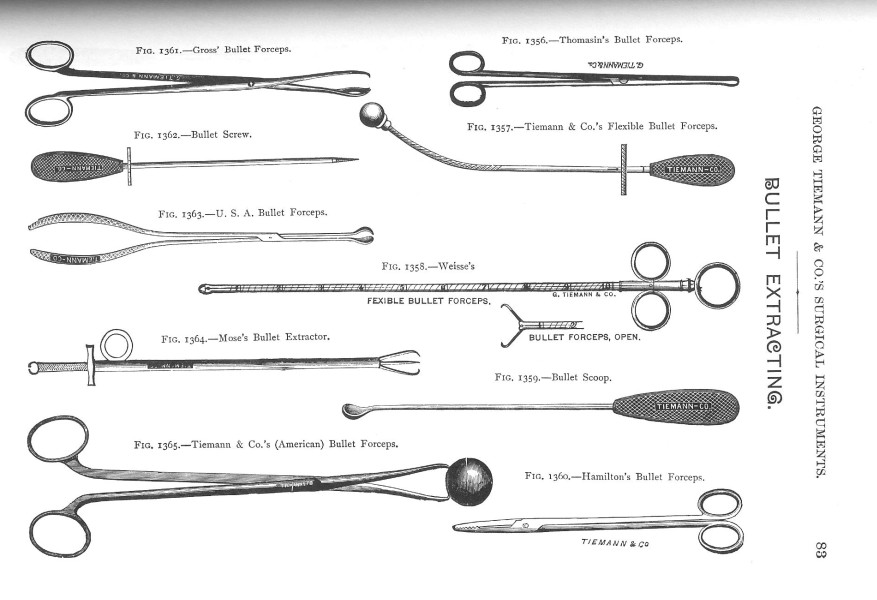Authentic Period Civil War Medical Items 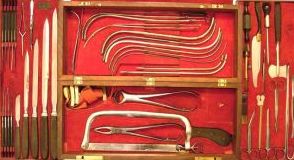 Civil War Surgical Sets Medical Text Books and Surgical Manuals Articles on Civil War Medicine See our Articles On Civil War Medicine |
Civil War Bullets, Forceps, And Extractors Although over 1000 different bullet types were used in the civil war the standard muzzleload projectile was the 3 ring lead 58 caliber Minie. First invented by Claude Etienne Minie it saw early limited use in the Crimean War. A test of this new technology in Vincennes in 1849 demonstrated that at 15 yards the bullet could penetrate two boards of poplar wood, each 2/3 inch thick. After further testing and refinement it was ultimately adopted as the standard bullet in 58 caliber size for the United States military Springfield rifle and later widespread use in the civil war. The picture below of Minie ball design is from Harpers Ferry: There were many variations but the key features included the creation of grease packed grooves( which expanded under intense heat and pressure from the powder charge) and a hollow conical base with a thin rim to hold and trap the powder charge. The projectile was made of soft lead with a hollow conocal base to trap expanding gas and allow for expansion. When fired, the expanding gas pushed forcibly on the base of the bullet, deforming it to engage the rifling in the barrel. This provided spin for accuracy, a better seal for consistent velocity, longer range, and cleaning of barrel debri. The high velocity and increased range from bullet spin resulted in severe wounds which shattered rather than just fractured bone. The severely comminuted fractures resulted in the need for amputation otherwise tissue infection, osteomeyolitis, sepsis, and ultimately death would follow. The fact that bullet velocity is directly porportional to tissue injury was not well understood at the begining of the civil war. Infact, early speculation was just the opposite(see below). However, the high increase in tissue damage and bony distruction of the new conical bullets was well known by early military surgeons who witnessed its deadly effects in the Crimean War. The excerpts below are from The Ambulance Surgeon or Practical Observations on gunshot wounds by Louis Appia 1862. Lacking the modern assistance of xray technology civil war surgeons had no certain way to tell bullet track and fragment dispersal. It was generally considered best to remove the bullet for fear of poisoning by the foreign material. The only practical way avaliable to them was direct wound exploration via incision or probing with various instruments specifically designed for this purpose. BULLET PROBES Bullet probes were generally metallic with a long thin shape. Some had small openings to facilitate placement of gauze or medicine into the bullet track. The Nelaton type had a round porclean tip designed to help locate the bullet deep inside tissue. By inserting the probe and rubbing it against the bullet, the soft lead would leave telltail marks on the porclean. This mark would differentiate it from bone which would not leave a gray mark on the porcelain after rubbing. There were variations which included a flexabile shaft to traverse curved or angled bullet tracks. BULLET EXTRACTORS Extractors were specially designed to remove the bullet, bullet fragments, or other foreign material from the wound.They were also, by nature of intent, long thin metal instruments. In there most simplistic form they had a long metal shaft with a screw tip. The screw was driven into the soft lead bullet and then removed. There were also similar forms with a scoop tip rather than screw. They were usually heavy built to exert maximum force at there tip to hold and remove the bullet. Common types were the Gross, US Army, Tiemann, and Thomasin's. Other more complex designs such as Mose's, Weisse's and Collins were used. 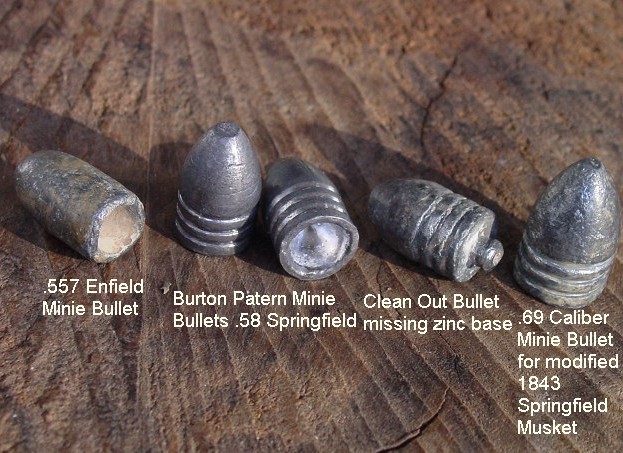
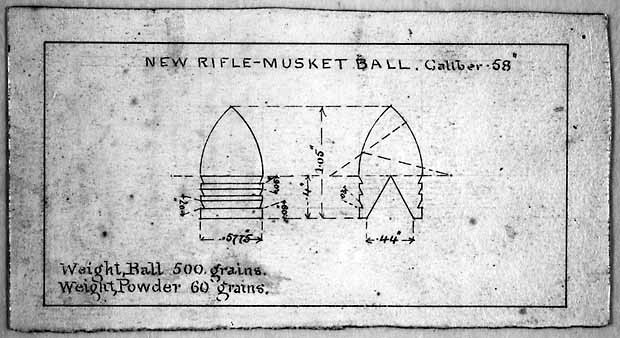
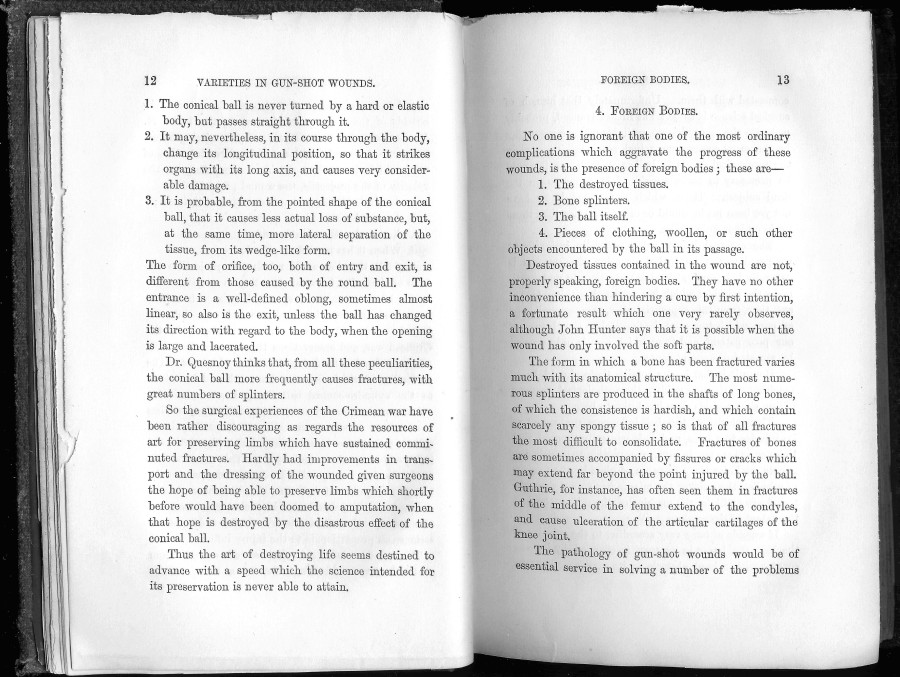
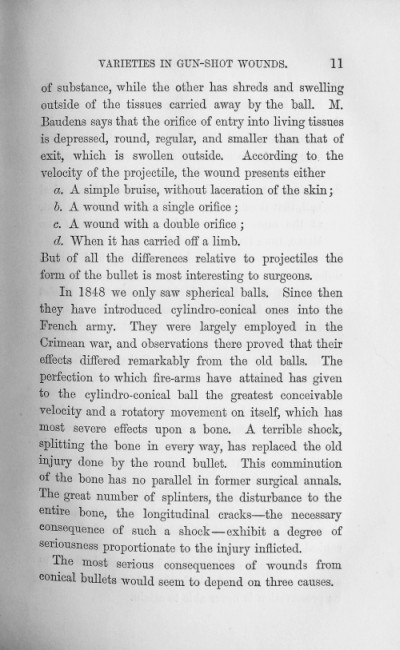
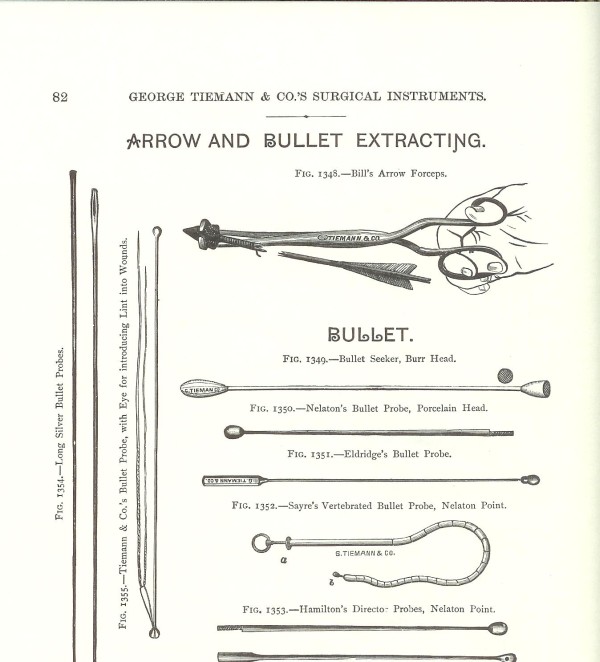

(from American Armanmentarium Chirurgicum George Tiemann and Co)
